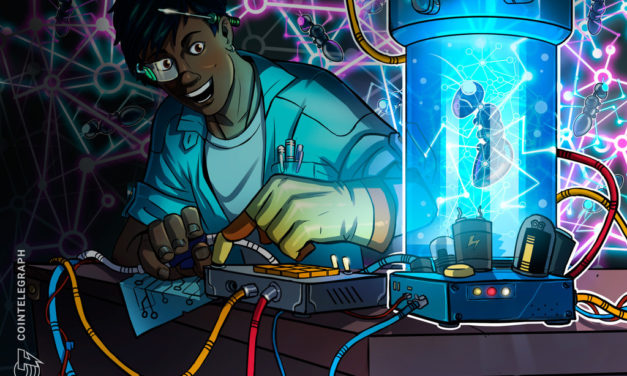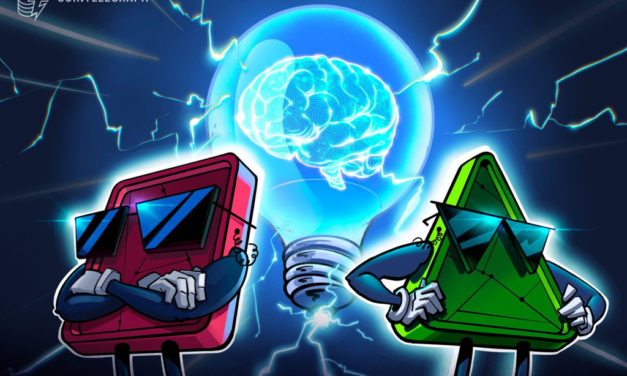The challenges with building a reputation in Web3 — and how to solve them
Amazing things are being built in Web3 — often by pseudonymous individuals who prefer to keep their real-world identity private.In some ways, this is liberating. It means that anyone can have a chance to get involved in a project and deliver value to the community — irrespective of their background.But as decentralized identities proliferate, there’s one issue that cannot be ignored: Ensuring that there’s an easy way for us to verify the reputation of others.This matters… for many reasons. If you’re about to start using a DeFi project created by someone pseudonymous, you’d like a way to know that they’re trustworthy and dependable.If you’re reading an article that someone has written online, there should be a way of checking that their past works have been truthful and well-received.And if you’re buying an item from a fellow user on a peer-to-peer marketplace, it’s crucial to check that they’ll deliver what you’ve asked for — and on time.All of this has made reputation in Web3 a hot-button topic. Now, multiple crypto enthusiasts are exploring this concept in great detail — giving us the evidence we need to trust other people without knowing their name and background.This could be a refreshing antidote to the status quo, where not everything we see online can be believed. Fake testimonials for products are a long-running problem, while bots on Twitter can distort reality and our perceptions of people and companies. We’ve even seen experiments where fake restaurants have shot to the top of TripAdvisor rankings.Understanding decentralized identitiesAs a concept, DIDs remain at an early stage. But one day, your crypto wallet could store far more than altcoins and NFTs. Instead, they could be a rich background of what you’ve accomplished — open for all to see. And whereas the profiles that some of us carefully cultivate on Facebook and LinkedIn are centralized, we would see in full control of all of our data.Ethereum co-founder Vitalik Buterin recently explained how this could work in practice when he unveiled proposals for “soulbound” NFTs. Known as SBTs, he paints a picture of how these digital assets could be used to represent everything from a college degree to a drivers’ license — and even provide a modern alternative to credit scores.Buterin pointed to a proof-of-attendance protocol as an example of technology that could also show promise. POAP NFTs can be used to show that someone was present at a particular event — such as a conference or a concert. While this could have a plethora of exciting use cases in the future, there’s one problem that needs to be confronted: Because NFTs can be easily transferred, someone could just buy a token that says they achieved something instead — but products are hitting the market that prevent this.As we find ways to dutifully record the achievements and attributes that form our reputations online, Buterin argues that a non-transferable type of NFT needs to be created — and this could also deliver tangible improvements to the way governance is achieved in decentralized autonomous organizations.Moving away from the technical limitations, you may be wondering why digital reputations are necessary in the first place. Well, a big motivation relates to how our data is currently fragmented across a number of social networks and websites — and it’s difficult to transfer from one place to another. If you’ve got a five-star rating on eBay after selling 50,000 items, this stellar reputation cannot easily be transferred to Etsy.Reputation is powerMetis is one of the projects that is focusing on these challenges. The platform has established Reputation Power, which is earned through on-chain achievements. Users can accrue RP by contributing to protocols, DApps and decentralized autonomous companies — whether through deploying smart contracts or minting NFTs.In the years to come, its vision is creating an environment where someone’s reputation can easily be viewed on just one profile — bringing together all aspects of life, from your loved ones and colleagues to the friends you share hobbies with. It’s the ultimate way of showcasing your credibility, engagement and trustworthiness — as well as the contribution you’ve made to the causes you care about.The project told Cointelegraph:”Metis’ Reputation Power is a portable and composable reputation, unique to users’ specific achievements and on-chain history. Reputation Power (or RP) can be collected by users performing on-chain actions such as interacting with smart contracts or voting in governance.”A $100 million was recently established to help cultivate projects that want to build on top of Metis — including DeFi protocols, NFT collections, metaverse platforms and games. And doing so could be appealing for developers, not least because this platform has some of the lowest fees of any layer-two blockchain — helping to make microtransactions affordable.At the beating heart of this ecosystem is a “solid, scalable, cheap and decentralized” technical infrastructure called Smart Layer 2 — a secure environment that can cope with growing demand from users, with the robustness that the Web3 economy deserves.There’s so much to be excited about — and plenty of work to ensure that Reputation Power becomes valuable for businesses and consumers alike.Focus remains on mass adoption, and creating infrastructure that’ll be used for generations to come.As the project recently said: “Although the market is going bearish, may the builders never stop!”Disclaimer. Cointelegraph does not endorse any content or product on this page. While we aim at providing you with all important information that we could obtain, readers should do their own research before taking any actions related to the company and carry full responsibility for their decisions, nor can this article be considered as investment advice.
Čítaj viac






